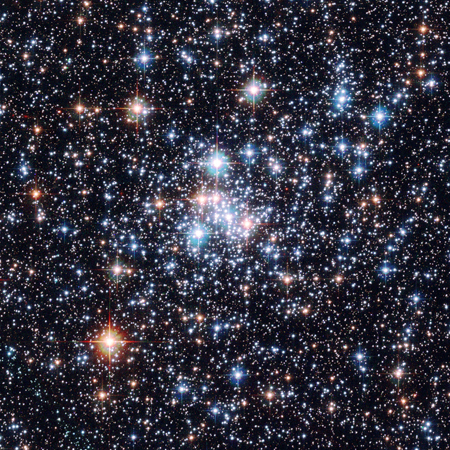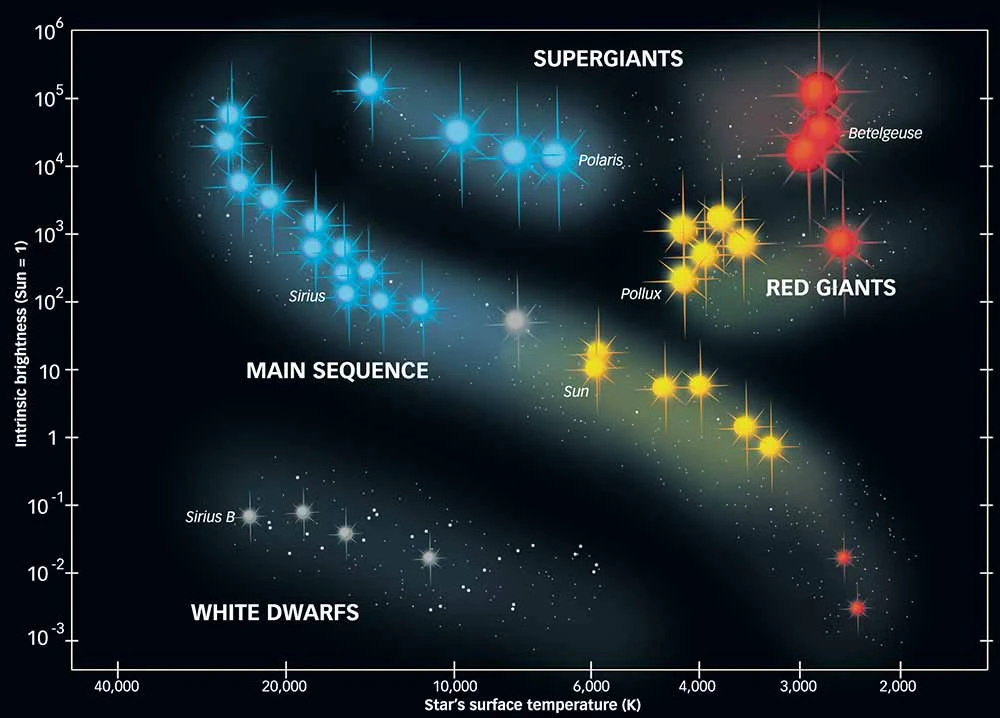
Posted on 11/05/2018 8:13:00 AM PST by ETL
Is it OK to say dwarf? or is it midget? or is it vertically truncated? or is it little people?
Vertically challenged, please. Let’s not disparage short galaxies.



Yes. Was thinking it as I typed but forgot to incude it. Thanks.


There are huge red giant stars that are among the coolest stars.
—
Interesting. Why do red giants become giant? I know our sun will do that, but why? What makes it expand?

At least they didn’t say, “midget”... ;^D
A red giant star is a dying star in the last stages of stellar evolution. In only a few billion years, our own sun will turn into a red giant star, expand and engulf the inner planets, possibly even Earth. What does the future hold for the light of our solar system and others like it?
Forming a giant
Most of the stars in the universe are main sequence stars — those converting hydrogen into helium via nuclear fusion. A main sequence star may have a mass between a third to eight times that of the sun and eventually burn through the hydrogen in its core.
Over its life, the outward pressure of fusion has balanced against the inward pressure of gravity. Once the fusion stops, gravity takes the lead and compresses the star smaller and tighter.
Temperatures increase with the contraction, eventually reaching levels where helium is able to fuse into carbon. Depending on the mass of the star, the helium burning might be gradual or might begin with an explosive flash.
“Although fusion is no longer taking place in the core, the rise in temperature heats up the shell of hydrogen surrounding the core until it is hot enough to start hydrogen fusion, producing more energy than when it was a main sequence star,” the Australia Telescope National Facility says on their website.
Red giant stars reach sizes of 100 million to 1 billion kilometers in diameter (62 million to 621 million miles), 100 to 1,000 times the size of the sun today. Because the energy is spread across a larger area, surface temperatures are actually cooler, reaching only 2,200 to 3,200 degrees Celsius (4,000 to 5,800 degrees Fahrenheit), a little over half as hot as the sun. This temperature change causes stars to shine in the redder part of the spectrum, leading to the name red giant, though they are often more orangish in appearance.
In 2017, an international team of astronomers identified the surface of the red giant [pi] Gruis in detail using the European Southern Observatory’s Very Large Telescope. They found that the red giant’s surface has just a few convective cells, or granules, that are each about 75 million miles (120 million kilometers) across. By comparison, the sun has about two million convective cells about 930 miles (1,500 km) across.
Stars spend approximately a few thousand to 1 billion years as a red giant. Eventually, the helium in the core runs out and fusion stops. The star shrinks again until a new helium shell reaches the core. When the helium ignites, the outer layers of the star are blown off in huge clouds of gas and dust known as planetary nebulae. These shells are much larger and fainter than their parent stars.
The core continues to collapse in on itself. Smaller stars such as the sun end their lives as compact white dwarfs. The material of larger, more massive stars fall inward until the star eventually becomes a supernova, blowing off gas and dust in a dramatic fiery death.
The future of the sun
In approximately 5 billion years, the sun will begin the helium-burning process, turning into a red giant star. When it expands, its outer layers will consume Mercury and Venus, and reach Earth. Scientists are still debating whether or not our planet will be engulfed, or whether it will orbit dangerously close to the dimmer star. Either way, life as we know it on Earth will cease to exist.
“A similar fate may await the inner planets in our solar system, when the sun becomes a red giant and expands all the way out to Earth’s orbit some five billion years from now,” astronomer Alex Wolszczan, an astronomer at Pennsylvania State University, said in a statement.
“The future of the Earth is to die with the sun boiling up the oceans, but the hot rock will survive,” astrophysicist Don Kurtz, of the University of Lancashire, told Reuters.
The changing sun may provide hope to other planets, however. When stars morph into red giants, they change the habitable zones of their system. The habitable zone is the region where liquid water can exist, considered by most scientists to be the area ripe for life to evolve.
Because a star remains a red giant for approximately a billion years, it may be possible for life to arise on bodies in the outer solar system, which will be closer to the sun.
“When a star ages and brightens, the habitable zone moves outward and you’re basically giving a second wind to a planetary system,” exoplanet scientist Ramses M. Ramirez, a researcher at Cornell’s Carl Sagan Institute, said in a statement. “Currently objects in these outer regions are frozen in our own solar system, like Europa and Enceladus - moons orbiting Jupiter and Saturn.”
The window of opportunity will only be open briefly, however. When the sun and other smaller stars shrinks back down to a white dwarf, the life-giving light will dissipate. And supernovae from larger stars could present other habitability issues.

IIRC hotter stars (like our sun) only “burn” their core where as cooler stars burn all of their hydrogen do to convention. The good news is when the hotter star nova they seed their surroundings with more hydrogen and heavier elements. Our sun will not nova but as a Red Giant it to will release it’s hydrogen via interstellar wind. Only the hot core will remain as a white dwarf.
Not a place to go without your lead underwear. The radiation there must be insane.
Ennnk! Wrong!
It’s in Sagittarius! WELL into Sagittarius. You would think the NASA folks would have gotten that right.
No matter, it would be hard to see from the USA, except maybe Hawaii.
When we get to Australia, I’ll take a look at it.

Disclaimer: Opinions posted on Free Republic are those of the individual posters and do not necessarily represent the opinion of Free Republic or its management. All materials posted herein are protected by copyright law and the exemption for fair use of copyrighted works.